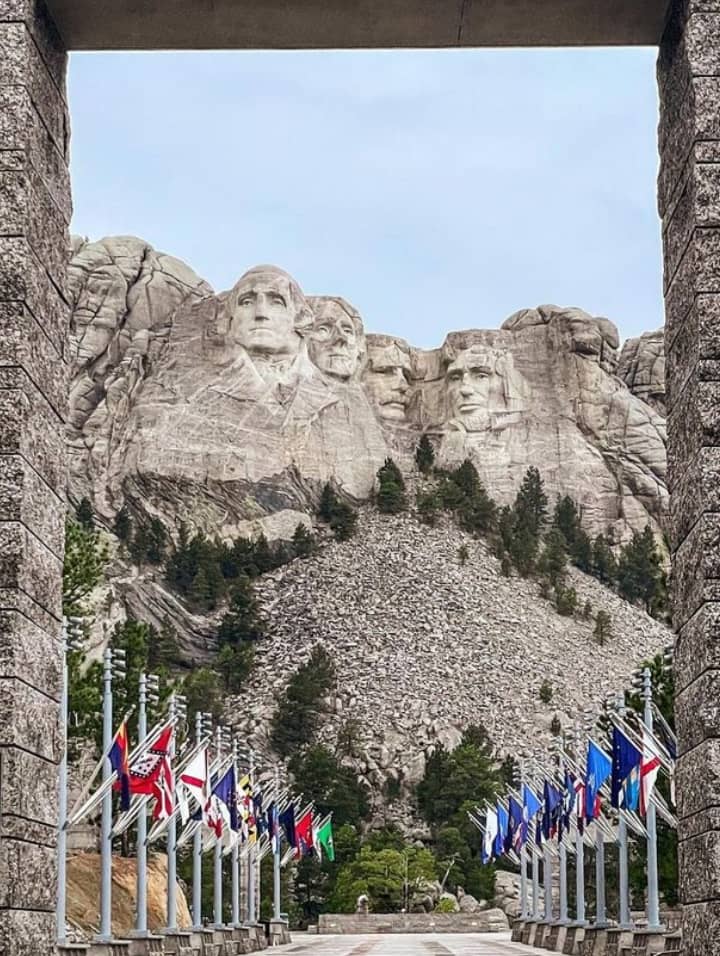Mount Rushmore, the iconic American monument located in the Black Hills of South Dakota, evokes a wide range of emotions and opinions. Carved into the granite face of the mountain, the 60-foot heads of four U.S. presidents—George Washington, Thomas Jefferson, Theodore Roosevelt, and Abraham Lincoln—stand as a testament to the nation’s history and ideals. However, my journey to Mount Rushmore revealed a complex tapestry of awe, disappointment, reverence, and controversy that reshaped my perspective on this American landmark.
The Initial Excitement
My trip to Mount Rushmore began with the excitement that any history enthusiast might feel when visiting a renowned national monument. The Black Hills are a beautiful region, and the drive through the rugged terrain offered breathtaking views that heightened my anticipation. As I approached the monument, I felt a mix of emotions—pride in my country’s achievements and curiosity about the monumental task of carving these faces into stone.
The First Glimpse
Upon my first sighting of Mount Rushmore from a distance, I couldn’t help but feel a sense of awe. The sheer scale of the project and the skill required to execute it were impressive. However, as I drew closer, my perspective began to shift. The closer I got, the more the monument seemed to shrink, both in size and in significance. This was my first brush with the underwhelming reality that many visitors experience.
The Monument’s Historical Context

To fully understand Mount Rushmore, it’s essential to delve into its history. The monument was conceived by historian Doane Robinson in the early 1920s as a way to promote tourism in South Dakota. Sculptor Gutzon Borglum, known for his work on the Stone Mountain project in Georgia, was commissioned to create the monument. Borglum chose the presidents for their contributions to the birth, growth, and preservation of the United States.
Construction began in 1927 and continued for 14 years, with the monument officially completed in 1941. The faces of the presidents were intended to symbolize the nation’s ideals: Washington for the birth of the country, Jefferson for expansion, Roosevelt for development, and Lincoln for preservation. This narrative, while noble, glosses over the darker aspects of American history that are inextricably linked to these figures.
The Controversial Aspects
As I stood before the monument, I couldn’t ignore the complex and often controversial history that surrounded it. Mount Rushmore is carved into the Black Hills, a region that is sacred to the Lakota Sioux. Known as the Six Grandfathers by the Lakota, this land was seized by the U.S. government in the late 19th century, despite being guaranteed to the Lakota in the Treaty of Fort Laramie (1868). This act of desecration is a stark reminder of the injustices faced by Native American communities.
The monument itself, while a marvel of engineering and artistry, also symbolizes a history of colonization, displacement, and cultural erasure. For many Native Americans, Mount Rushmore is a painful reminder of the land and lives lost to the expansionist policies of the U.S. government. This perspective adds a layer of complexity to the monument that is often missing from mainstream narratives.
Visitor Reactions
The reactions of visitors to Mount Rushmore are as varied as the monument’s history. During my visit, I observed a range of emotions—from reverence and patriotism to disappointment and disillusionment. Some visitors were visibly moved by the monument, taking in its grandeur and the stories it represents. Others, however, expressed feelings of disappointment, finding the monument smaller and less impressive than they had imagined.
One particularly poignant moment occurred when a group of Native American protesters gathered near the monument, holding signs that read “Honor the Treaties” and “This is Our Land.” Their presence was a powerful reminder of the ongoing struggle for recognition and justice faced by Indigenous communities. Their voices added a crucial dimension to my understanding of Mount Rushmore, highlighting the need for a more inclusive and honest conversation about its significance.
The Surrounding Area
Beyond the monument itself, the Black Hills offer a wealth of natural beauty and attractions. Custer State Park, with its sprawling landscapes and abundant wildlife, provided a welcome respite from the weighty history of Mount Rushmore. The nearby Crazy Horse Memorial, still under construction, offered a contrasting narrative—one that seeks to honor Native American heritage and resilience.
The Crazy Horse Memorial, started in 1948 by sculptor Korczak Ziolkowski, aims to depict the Lakota leader Crazy Horse on horseback, pointing towards his ancestral lands. While still far from completion, the sheer scale and ambition of the project are awe-inspiring. The accompanying museum and cultural center provide valuable insights into Native American history and culture, offering a more balanced and comprehensive understanding of the region’s significance.
The Monument’s Symbolism
As I reflected on my visit, I grappled with the symbolism of Mount Rushmore. On one hand, it represents the ideals of democracy, freedom, and leadership that the United States aspires to. The presidents immortalized in stone each played crucial roles in shaping the nation’s history, and their contributions are undeniably significant.
On the other hand, the monument also embodies the darker aspects of American history—colonization, displacement, and the marginalization of Native American communities. The faces of the presidents, carved into a sacred mountain, are a stark reminder of the contradictions and complexities that define the nation’s past and present.
The Need for Dialogue
My journey to Mount Rushmore underscored the importance of dialogue and understanding. It’s crucial to acknowledge and address the diverse perspectives and histories that shape our collective memory. Monuments like Mount Rushmore should not be seen solely as symbols of national pride, but as catalysts for critical reflection and conversation.
Engaging with the history and experiences of Indigenous communities is essential to fostering a more inclusive and just society. By recognizing the injustices of the past and working towards reconciliation, we can honor the full scope of our history and build a future that respects and values all voices.
Conclusion
My experience at Mount Rushmore was a journey through a landscape of mixed emotions and complex histories. The monument, while impressive in its own right, is imbued with layers of meaning that go beyond its granite facade. It stands as a testament to both the achievements and the failings of the United States, reminding us of the need for ongoing dialogue and reflection.
As I left the Black Hills, I carried with me a deeper understanding of the monument and its significance. Mount Rushmore is more than just a tourist attraction; it is a powerful symbol of the nation’s history, ideals, and contradictions. By engaging with its complex legacy, we can work towards a more inclusive and honest understanding of our shared past.







Thanks so much for putting things in the appropriate perspective… what was done to the NATIVE AMERICANS is NOT something to be proud of, but rather to be reflected upon with remorse!